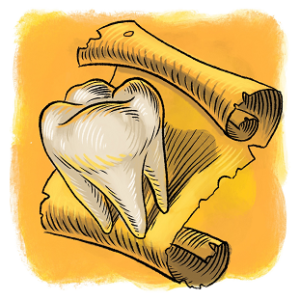AAE Coding Updates
 By Dr. Elizabeth Shin Perry
By Dr. Elizabeth Shin Perry
The COVID-19 crisis has brought many new issues to our endodontic practices over the past few months. One thing that has not changed is the importance of dental coding. It is now more important than ever that endodontists are being reimbursed properly for work that has been done. The AAE continues to advocate for our members for appropriate ADA CDT codes and for updated information regarding third party payer reimbursement.
In the midst of the COVID-19 pandemic, the ADA Code Maintenance Committee (CMC) convened on March 12 for the annual update to the ADA CDT code set. In response to member concerns and coding challenges in my own practice, I was honored to represent the AAE, a voting member of the CMC, and testify for the need of a new suite of codes to cover non-apicoectomy surgical procedures and to address the current gap that exists in the CDT. The following codes were unanimously approved by the committee for addition to the ADA CDT code set in 2021:
- D3471 surgical repair of root resorption – anterior
- D3472 surgical repair of root resorption – premolar
- D3473 surgical repair of root resorption – molar
- D3501 surgical exposure of root surface without apicoectomy or repair of root resorption– anterior
- D3502 surgical exposure of root surface without apicoectomy or repair of root resorption – premolar
- D3503 surgical exposure of root surface without apicoectomy or repair of root resorption – molar
The following code was deleted:
- D3427 periradicular surgery without apicoectomy
In addition, the ADA Code Maintenance Committee held an emergency virtual meeting on April 14th to approve the following COVID-19 related codes:
- D0604 antigen testing for a public health related pathogen, including coronavirus
- D0605 antibody testing for a public health related pathogen, including coronavirus
Another avenue for advocacy was the meeting of the AAE leadership with the Dental Directors of major dental benefit plans held virtually on April 28. Together with AAE President Dr. Alan Gluskin, Immediate Past President Dr. Keith Krell, AAE staff Ken Widelka, Trina Andresen Coe, and Srini Varadarajan , Dr. Kenneth Wiltbank and I addressed specific concerns related to COVID-19 and our endodontic practices. Observations from the COVID-19 discussion with the dental directors as applicable to coding and insurance reimbursement include the following:
- PPE: The ADA had suggested considerations for coverage of personal protective equipment (PPE) as well as the submission of the code D1999 (unspecified preventive procedure, by report) to document and report the use and cost of additional PPE, per patient visit. Some insurers are allowing coverage for this code or allowing the charge to be passed along to the patient.
- Emergency Procedures: Insurers are accepting that we are performing emergency procedures due to constraints of the pandemic. Thus, it is reasonable that the first visit of a root canal seen as an emergency can be submitted as D3221 (pulpectomy). When the patient returns for completion of the root canal, the endodontic therapy code is then submitted, as long as the root canal therapy is not completed on the same day as the pulpectomy.
- Telehealth: Many insurers are accepting consultations done by teledentistry and are covering the D0140 (limited exam, problem focused) and other exam codes when submitted along with D9995 (teledentistry – synchronous) or D9996 (teledentistry – asynchronous). It is important to note that many plans benefit the underlying exam code when submitted with a teledentistry code, but not the teledentistry code itself. Endodontists should remember to submit both the exam code and the teledentistry code when providing remote examination, since the teledentistry codes are purely adjunctive codes.
- CBCT Pre-op imaging: The dental directors were made aware that the present recommendation by the ADA and the AAE for pre-op imaging is extra-oral radiographs, in the case of endodontics, CBCT. Broadly, dental directors responded with awareness and ongoing consideration of the benefits of the use of CBCT. However, some dental directors also cautioned that several plans are self-funded where the third party is merely an administrator, and that benefit decisions are, in part, based upon the willingness of employer groups to support the cost of services.
- Testing: The AAE informed the dental directors of the unanimous approval of two new CDT codes by the ADA’s Code Maintenance Committee for Antigen and Antibody testing for a public health pathogen including coronavirus, effective January 1, 2021. Until these codes are active for use, dentists can use the code D0999 (unspecified diagnostic procedure, by report) for any testing within the dental office.
- Additional collaboration: insurers understand that many dental offices are closed for treatment. During the pandemic, some plans are extending coverage for patients seen by out-of-network providers. The AAE promoted endodontics as emergency dental care providers for insurers seeking open dental offices to treat their patients.
The AAE continues to advocate for our members in coding and third party payer matters. Please send any questions or inquiries to advocacy@aae.org.
Elizabeth Shin Perry, D.M.D., Diplomate, is a member and ADA Code Maintenance Committee representative of AAE’s Practice Affairs Committee. She also serves as a District I director on AAE’s Board of Directors.




